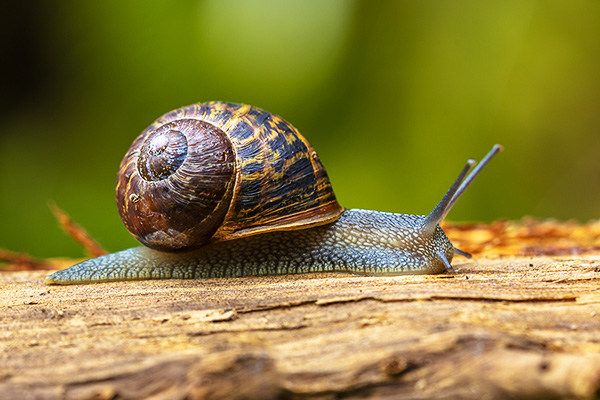Mucus produced by the common garden snail (Helix aspersa) is green. The slime is not actually green in color but is “green” in terms of its environmentally friendly chemistry. It turns out that this snail’s mucus has chemical properties as a reducing agent for producing gold nanoparticles that promote wound healing and for use in other biomedical applications, according to researchers reporting in the journal Soft Matter (November 2020). The idea of using snail slime in medicine is not that farfetched, as snail slime was used by ancient Greeks to treat skin inflammation, and snail slime protein is currently used in cosmetics—although with the snootier name of “snail secretion filtrate hydrates”—for its skin-hydrating properties and to treat acne. See also: Gastropoda; Gold; Green chemistry; Inflammation; Nanoparticle; Skin; Skin disorders

To stimulate mucus production, the researchers sprayed garden snails with ozone gas in a chamber (no snails were harmed). To synthesize gold nanoparticles, the scientists added the mucus to a solution of tetrachloroauric acid (HAuCl4) in deionized water and stirred the solution at room temperature, thereby reducing gold(III) of HAuCl4 to gold(0) of the nanoparticles. No other organic solvents or chemicals were needed, and no toxic byproducts were produced. For purification, the nanoparticles were washed with water. As gold nanoparticles formed, they became encapsulated in a layer of snail slime. See also: Oxidation-reduction; Ozone

To test the effectiveness of the nanoparticles, the researchers compared the healing time of untreated wounds to wounds treated with the snail slime-encapsulated gold nanoparticles. And what they found was that the encapsulated gold nanoparticles sped up the wound-healing process. Further work will be required to determine if these novel materials will speed the biological regeneration process for difficult-to-heal wounds, or if the nanoparticles can be used in other biomedical engineering applications, such as skin-tissue engineering. See also: Biomedical engineering; Regenerative biology





